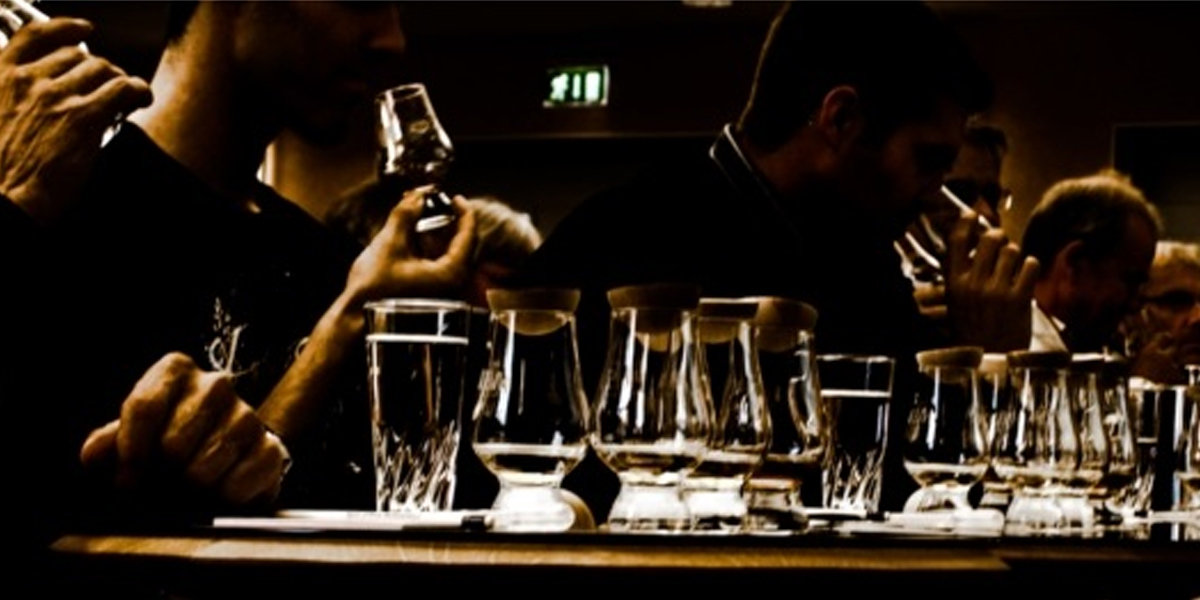A Japanese whisky tasting event is a great way to develop your palate and learn more about the wonderful spirit that is whisky. Any long-time whisky fan will know that these events come in all shapes and sizes.
Some are huge and impersonal, with hundreds of experts and guests attending from around the world. Others are small and intimate, and organised to cater to the preferences of a small group of people. Some run smoothly, while others see trays of glasses containing tasty whisky shatter all over the floor. It’s all part of the experience.
To start off, any whisky event needs the following:
- Proper glassware – Preferably tulip shaped glasses which capture the aromas of the whisky and allow for a warming effect when held.
- Organization – Even for a small group, be prepared. Pre-pour the whiskies, arrange the seating in an intimate, open arrangement, and have the food (if any) ready to be served.
- Order – Arrange the whiskies so that the lightest whisky is tasted first, and the stronger, peatier, more intense ones tasted last.
- Limit – Serving more than five whiskies will tire the palate and make it impossible for the delicate flavours to be appreciated.
The points above are essential for any whisky tasting to run smoothly, but how can you surprise and entertain your friends with this educational event, and what exactly makes a whisky tasting event ‘Japanese’? The obvious difference is that you will be serving Japanese whisky, but there’s a little more to it.
The Japanese Whisky Tasting
There are many wonderful Japanese whiskies to choose from, but before deciding on the bottles, make sure you know your guests.
Are they complete beginners to Japanese whisky? If so, go for global best-sellers like Yamazaki 12 year-old, multiple award-winning blended Hibiki 21 year-old, and Hakushu 12 year-old. These will make a great introduction to the Japanese whisky world.
Have they already tried the most readily available bottles worldwide from large distilleries like Yamazaki, Nikka, and Hakushu? Then offer them something different, perhaps a Ji-whisky sample, which are whiskies produced by small distilleries in different prefectures around Japan. With a very limited production, these are very hard to find outside the areas they are produced in.
Are the guests whisky experts and connoisseurs? Then our rare bottle collection is sure to blow them away.
Knowing your audience is sure to make your event a success.
World Whisky Vs Japanese Whisky
The first thing that will set your event apart is your knowledge as the host.
Whether you talk a little before the tasting, or even during, as guests sample the whiskies, is up to you. But be sure to educate guests on the differences between Japanese whisky and whiskies from other countries.
Bourbons are usually a little sweeter, while Scotch is often intense and powerful, wrapped in tradition and history. Japanese whisky, on the other hand, is a journey towards refined perfection, as distillers value improvement over consistency, in a never-ending mission to make their whiskies smoother and more delicate.
After describing some of the general flavours and production differences, educate your guests on Japanese whisky history and show them what has made Japan a rising star in the whisky world.
In recent years, Japanese whiskies have collected whisky awards all over the globe, often winning over world-renowned Scotch whiskies. Study our awards page and get your facts right.
The Highball Serve
As an added touch, give guests a deeper look into Japanese culture by serving them a Japanese whisky highball cocktail. The Japanese highball is an art in itself, made by adding liquid, then ice, stirring the ice and liquid as the water dissolves, then adding more ice, then sparkling water, and then more ice. We’ll delve deeper into the art of the Japanese whisky highball in another piece of our Whisky Senseii series.
While it is improbable a Japanese bartender will be on hand for the event to make the perfect highball, guests can experience drinking whisky topped with sparkling water in a highball glass.
For some, adding anything to good whisky is a sin, but for the sake of showcasing an important part of the Japanese whisky-drinking culture, we recommend you add the highball sampling to the schedule.
The Cuisine
Go into any bar in Japan and 99 per cent of them will serve food and snacks. This is because, culturally, Japanese people eat food while consuming alcohol. If a bar doesn’t serve any food, people will often move on, to find somewhere that does before ordering alcohol.
Capture this cultural difference, by serving some light snacks. Some sushi or sashimi, edamame beans, pickled vegetables, or even assorted cheeses and ham will do the trick. The closer the snacks are to an authentic Japanese culinary experience, the better.
Ultimately, a whisky tasting is a whisky tasting, regardless of the country the whisky you serve originates from. That’s why the devil is in the details. Using the points mentioned above, infuse your whisky tasting event with the impeccable attention to detail found in Japanese whisky, cuisine, and service.
Read up on your facts and pair this knowledge with Japan’s eating and drinking culture to give your guests a truly unforgettable experience.
Published: April 12, 2017Author: George Koutsakis
